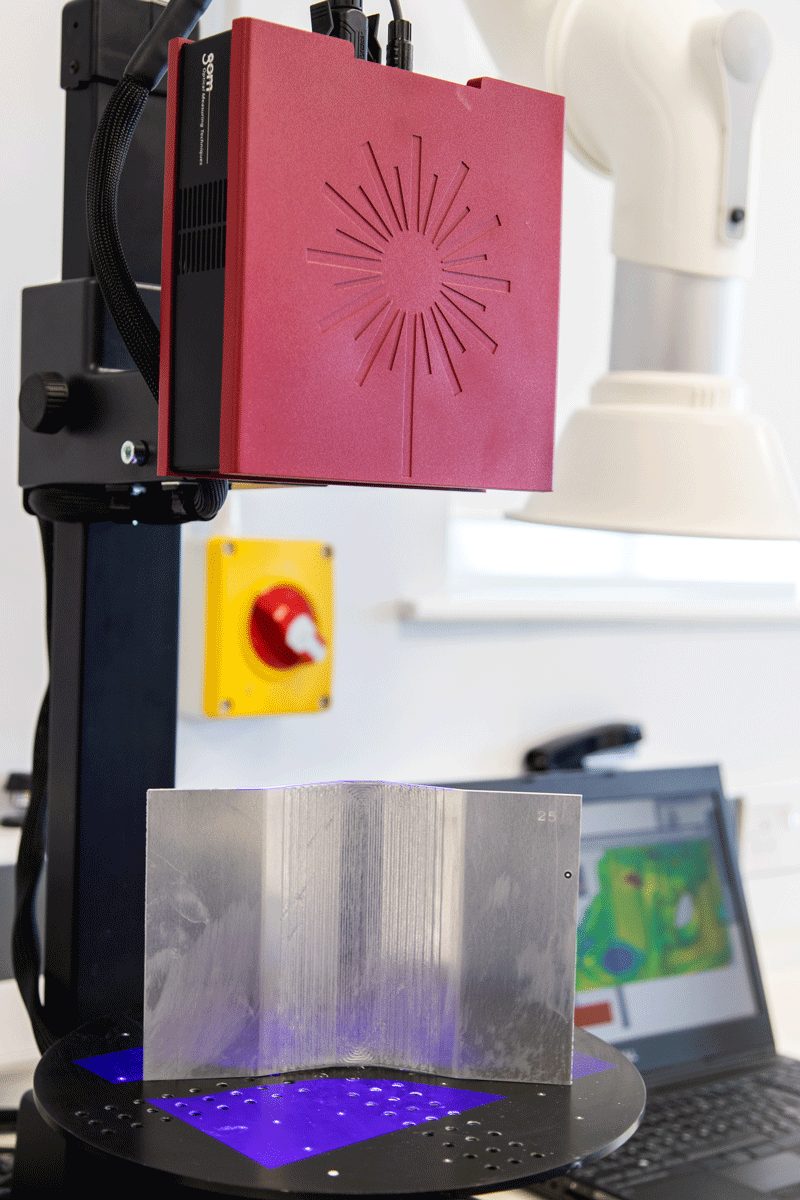Sheet metal forming in minutes
Mechanical Engineers from the University of Chester, UK, have developed a new, flexible, sheet metal forming process that they claim is much faster than other methods.

The team says its die-less process makes metallic prototypes in minutes instead of days or weeks, at a fraction of the standard cost.
Senior Lecturer Dr Amar Behera says their approach, also called ‘incremental sheet forming’, incrementally deforms a flat sheet of material into a 3D shape using a punch. Usually cylindrical with a hemi-spherical ball end, the punch follows a pre-programmed path dictated by computer aided design (CAD) and manufacturing software.
The engineers say it is similar to 3D printing as the part is formed layer-by-layer. So far, they have trialled sheet metals of aluminium alloy 1050AH14 and low-carbon steel CR4.
Behera is confident that anyone trained on a computer numerical control machine can make these parts. He says, ‘The skill required to generate the toolpath is the knowledge of CAD and manufacture software.’
The engineers believe that the punch has benefits over pre-existing methods, reducing time and cost and increasing capability. Behera says, ‘This process can make a variety of shapes and, in general, is a lot more flexible than conventional forming as it is a die-less operation.’
To date, they have made conical and tunnel shapes that are each fabricated in 15-30 minutes – including set-up, lubrication, manufacturing and unclamping.
However, there are challenges. He explains, ‘The key limitation is that there is material thinning. Parts that are too steep on their walls tend to fail. The failure is material dependent, some materials can withstand thinning more than others. The other key limitation is that of part accuracy. Parts tend to spring back on deformation and can have inaccuracies compared to the originally defined geometry. Fortunately, for both issues, there are some solutions available, including intelligent tool paths and process variants that include the use of heat, electricity or ultrasonic vibration, for instance.’
The tunnel shaped parts, as pictured, are made by clamping the sheet on two sides instead of four, increasing the variety of applications that incremental forming can be used for.
Laser scanning enables a comparison with the CAD model, as springback leads to underforming and overforming. Scanning electron microscopy gives microstructural insights like failure causes, surface texture evolution, lubrication and strain hardening effects, and tool and sheet interaction effects.
The team envisages that its method can be used to make prototypes and parts for biomedical implants, aerofoils, radiation shields, automotive fenders and solar cookers.
The plan is to combine the method with conventional subtractive and 3D printing processes to make complex components.

